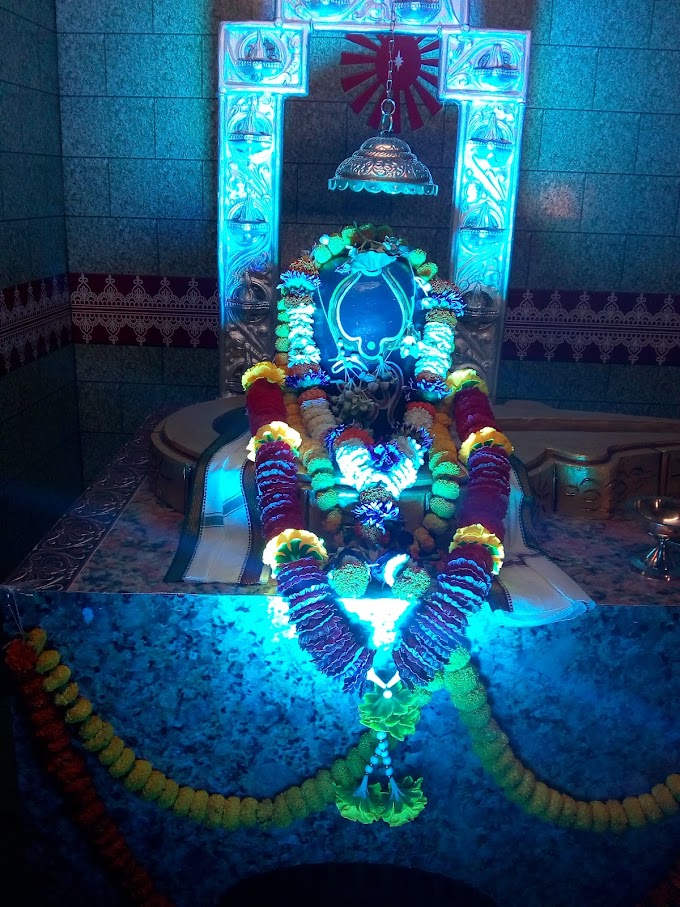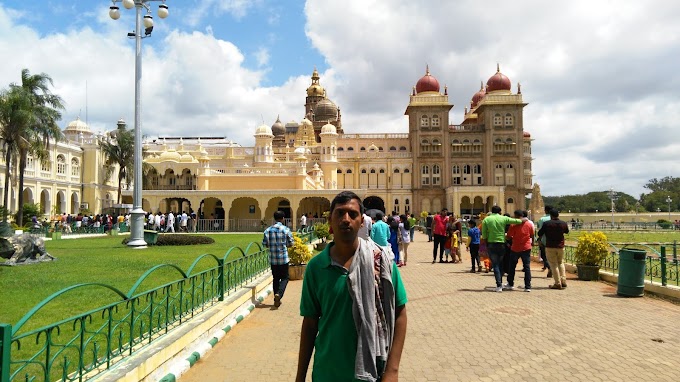THE CUSTOMS AND TRADITIONS OF ODISHA IS
IMPORTANT FOR THEM IN EVERY STEPS OF THEIR LIFE. THE ATTACHMENT WITH THE
CUSTOMS AND TRADITIONS ARE NOT ONLY FOR THE SAKE OF EMOTIONAL BUT ALSO FROM THE
SCIENTIFIC CORNER
Odisha is the famous State of
India which situated in the East part of India. This State initially was
covered west Bengal, Bihar, Chatisghar,jhardkhand and Odisha and called in the
name of Utkal prior to the independence. Except Odisha other several name are
Kalinga, Utkal, Udra/Odra, Kosala, Tosali and Orissa. Odisha pronounced
"ODISA", comes from the Sanskrit "ODRA DESHA". The state
was officially born on 1st April, 1936. In 1950 it became an independent
state incorporated into the union republic of India and continues to remain so.
The culture of Odisha / Orissa is
derived from ancient civilization culture and at present, the culture is mainly
influence by Aryan, Dravidian, Adivasi and western culture. During the
demolition of Ancient Indus Civilization, the major reason was the Aryan and
Dravidian culture entry into the ancient civilization who derived from the
west-Asia. The Adivasi is the ancient civilization who are exist till date. The
western culture has influenced by the British. The British Rulers left India
but they have leaved their culture which is the major hindrance on the road of
ancient Indian / Orissa culture.
India is a democracy country and
Orissa is a part of it. Orissa is famous due to the name of Lord Jaganath Temple,
Sun Temple. Rath yatra is the world famous charity and only one temple in world
which is named as sun temple situated in the east part of Orissa.
ANCIENT KALINGA
The History shows that a kingdom
which was situated in the east part of India during the Gupra empire in name of
KALINGA. Emperor Ashok was conquered this Kalinga in last fight of his ruling
period. The famous Kalinga war was fought
in Odisha in 261 B.C.that made Emperor Asoka give up war and hold Buddhism for
getting Moksha, During that period the citizen of
Kalinga were great fighters. Due to great fighters, it state was famous. The
fight between King of Kalinga and king Ashok was occurred near Daya river.
Buddha pilgrim is situated at the bank of Daya river which is named as DHAULI.
ODISHA
CUSTOM AND TRADITIONS
As per the Odiya calendar, the month are calculated
from full mood day to next full mood day which is a traditional method. It is
also a tradition that a PANJIKA is
the Hindu astronomical almanac and the
people of Orissa are using the Panjika in name of lord Jagannath is call “JAGANNATH
PANJIKA”.
The people of Orissa are celebrating the festival
that are 13 numbers and the festival are fallen in every month. Those customs
and traditions are old tradition which bind the relationship of all odiyas.
The main festival is Rath Yatra ( car festival)
which is the famous festival. In 2020’s car festival was telecasted worldwide
coverage. This type of telecast had never seen
which create the world record.
Odiya’s are celebrated their new year in 1st
April in every year and also in this day the old Panjika re-place by new one.
There are many festivals like Pana Sankaranti, Holi,
Raja, Sabitri, Shiva Ratri, Durga Puja, Laxmi puja etc are the major festical.
Except those festival, other festival are celebrated on the local basis in
district level.
WEDDING
/ MARRIAGE:-
There are many type of wedding ritual but for a man and woman it is the
most important tradition. Without marriage man and woman cannot live together.
For the sake of future generation, the Odiya’s celebrate marriage ceremony. In
other religious, the marriage is very simple but in oriya’s, the marriage is
divided mainly three stage i.e. nirbandha ( fixing the marriage or Ring
ceremony), Bahaghara (the main wedding ritual) and Chaturthi (consummation).
After marriage, the concept of honeymoon is not a Oriya’s culture. It is
adopted from other religion. The marriage also different from cast to cast and
place to place in Orisha.
The general principle is that on main wedding day, the bright groom
invites the near and dear persons to attend the function and dinner / lunch and
the same time the dinner / lunch prepares for the barat. And during the
Chaturthi day (consummation day) a party prepares from the site of groom but
most important thing that in the said party except the father and mother of
bright groom other persons of the bright groom side are join. This concept is
different from other culture.
Similarly the tribal’s tradition with regards to the wedding is the
different from general concept. Prior to the wedding, the tribals fixed a date
for group dance and drink Mahuli and dinner with non-veg. The main wedding day
and consummation both are one day (same day). On the main wedding day, the
groom and bright groom invite the whole villager to attend their function with
complement of dinner.
NAMING
CEREMONY:-
This tradition is also very old tradition and this is still using by
Oriyas. The naming ceremony also differ from cast to cast and place to place.
But generally this ceremony is celebrated on 21st day from the date
of baby birth. This oriyas culture is unique because the name of baby given and
the name also derived from the first latter which is choose by the priest on
the basis of Panjika.
During the Naming Ceremony, some near people are called for attend the function and bless the baby for his/her future be success. the said Invitation are personal invitation. in Rural total villagers are called for attend where as in cities and town some particular persons are called. Now days the invitation is changed to CARD. by way of invitation card calls where as in Rural area the invitation is by way of Oral and door to door.
DEATH
CEREMONY:-
For the human being the birth ceremony and death ceremony is the
important for oriyas. Death ceremony is also differing from cast to cast and
religion to religion and place to place. The majority is that the death
ceremony mainly is celebrated for 13 days. Among 13 days, 10th, 11th
and 12th are very important.
The near and dear persons are invited on 11th day of death
ceremony. In some place the whole village is also invited and they come for
dinner or lunch. During the ancient time this 11th day was
celebrated in shape of lunch because that time light facility was not
available. Even rural area also they celebrates during day time. But in cities
and town celebrates the 11th day during night with dinner.
Another important point is that who conducted the cremation, that person
is restricted to attend any function , festival or temple visit. Even in their family
is also restricted to celebrate any festival or function like marriage or new
house opening festival.
BRATA
GHARA:-
in case of Brahmin cast, their family
celebrate Brata Ghara taking place on auspicious day. For them it is most
important and without Brata Ghara they could not consider as Brahmin or priest.
The Upanayana restricted traditionally to the Brahmin caste and it essentially for
a young boy's of Brahmin cast and it is called as second birth. Due to
this Brata Ghara, during the wedding ceremony, many rituals are reduced. In case
of general cast the wedding is 3 to 4 house and in same place the Brahmin
celebrates 30 min.
For everything
to do need a particular good time for that person for which Panjika is
necessary. The concept of Pajika derived from 12th century during
the starting point of construction of lord Jagannath temple. Therefore the
first Panjika name is called Madala Panji which is published in regional
language since then.
PANJI:-
In Orissa Madala Panji is the important for all Oriyas. This astronomical almanac describes the
historical festival / event of Lord Jaganath and Jaganath Temple. This madala
Panji concept derived from 12th century and still in continue
process and traditionally up-grade years to year which is re-placed by new
madala panji in the month of April (during Pana Sankranti) of every year.
From the date of Odiya new year ( after Pana
Sankaranti), the summer session starts and other festival, ceremony, date is
fixed till the next up-gradation which will be on Pana Sankaranti of next year.
There are other six Panji is available which is known
in name of Kohinoor Panji (similar to Madala Panji), Biraja Panji, Radharaman
Panji, Bhagyadeep panji, Bhagyajyoti Panji, Bhagyachakra Panji. The Panji are divided
accordance to their zone or area.
In other parts of India it is called a panchangam. It is amongst the most known annual books published, which is covered whole India and is a useful reference for Hindus to determine the most auspicious times for their rituals, festivals, tradition, celebrations marriage, death ceremony travels, etc. Everybody verify the auspicious time in Panji before to approaches a priest or an astrologer to decide on the details. Even "non-believers" amongst Hindus and those who are not Hindus often consult a panjika for much of the practical information it publishes. It also records about other religions and other festivals, dates of birth and death of many leading personalities and carries informative articles on astrology.
LUNAR ECLIPSE /SOLAR ECLIPSE:
During this two time the evil spirit or the dark side be the powerful then other. As per the Hindu Religion during this time there is prohibited for food and to do the Auspiciou work like marriage, worship, prayer etc. The temple is closed. After the complete of eclipse, the women of house are washed total house, dress, utensils etc. Thereafter those are ready for re-use. This is the tradition of Oriya culture. These twoperiod is very important for Oriyas.
The above factual are derived from the ancient
culture and still in continuing process. Because of tradition no one have dare
to changes. But due to generation gapes many traditions are changes. Now days
all human being are busy with they work and collection of earning source for
which these traditions chages.
The Oriyas tradition and customs are ancient for
that reason, it have importance that is not fully true but have some scientific
reasons. In panji shows the future also for which Indians are believing on
their astrology.












